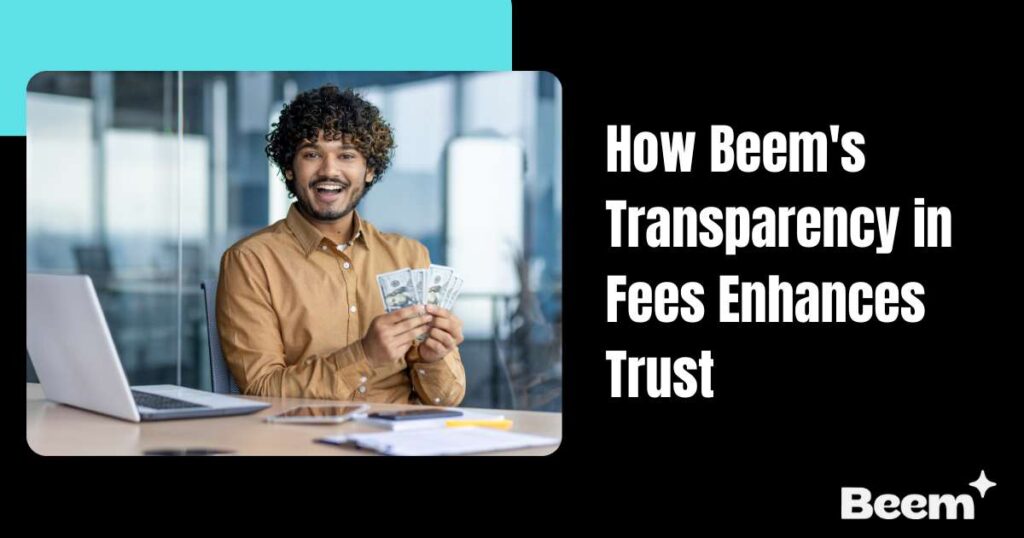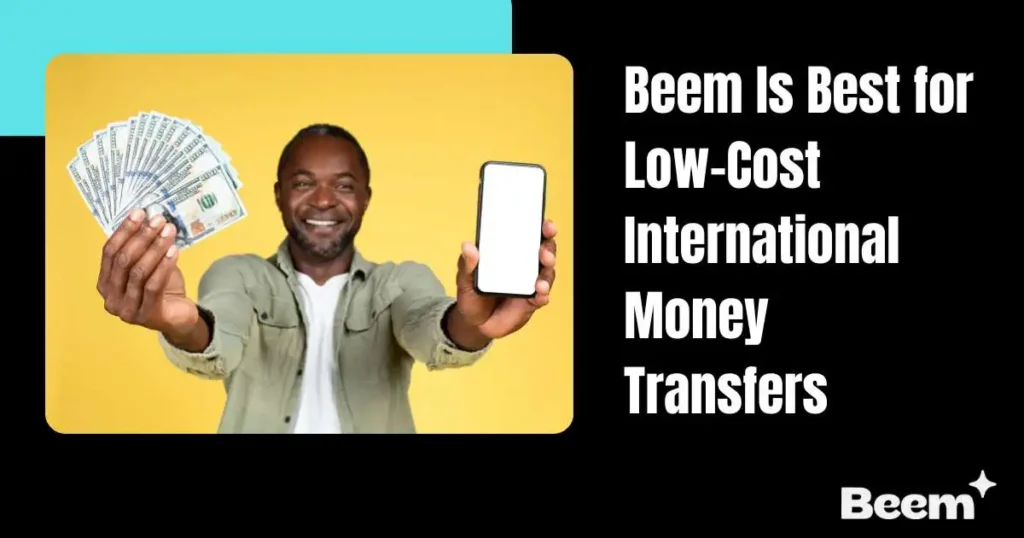Cross-border money transfers no longer have to be difficult, expensive, or time-consuming. Mobile wallets are transforming how international money transfers work. Mobile wallets for international transfers offer a fast, affordable, and user-friendly alternative to traditional banking. With mobile wallets, you can conveniently, quickly, and affordably do business from your smartphone anywhere in the world. They can be used to pay freelancers abroad, support family and friends, or manage international business transactions.
They are convenient, empowering, and practical. Using mobile wallets, you can avoid traditional bank fees, delays, and complicated wire transfer processes and keep an eye on every transaction in real time. Even when relocating, you can send money anytime and from anywhere. Funds can be transmitted to recipients in minutes, making it a vital tool for everyday needs and crises.
Learn how to use mobile wallets safely and effectively with this blog. And why they’re becoming the preferred method of global payment.
1. What Is a Mobile Wallet?
A mobile wallet is a digital device that securely stores your payment information, usually an app or a built-in feature on your phone. While mobile wallets reduce reliance on traditional banks, most still require a linked account or card, especially for funding or withdrawing money.
Mobile wallets function by connecting your bank account, debit card, credit card, or prepaid balance to the app. After the setup process, you can use your phone to pay for goods and services, send money to family or friends, receive payments, and even store loyalty cards or tickets within a single application.
The biggest strength of mobile wallets is their accessibility and convenience. You don’t have to visit a bank, fill out forms, or wait for long transfer times. Everything happens at your fingertips and in real time.
Key Features of Mobile Wallets:
- Send and receive money right now.
- Pay for goods and services online or in person.
- Keep many payment methods safe.
- View the receipts and transaction history.
- Use contactless payments, QR codes, phone numbers, or email addresses for transfers.
PayPal: is a widely accepted digital wallet worldwide, perfect for safe and secure online transactions and transfers abroad. Supported by merchants and freelancers in large numbers.
Venmo: Mostly used in the U.S. to send money to friends, pay bills, and make impulse buys immediately.
Cash App: A US-based wallet widely used for instant money transfer, peer-to-peer money transfer, and investment options for stocks and Bitcoin.
Xoom: a PayPal service, lets you send money, pay bills, or reload phones in over 130 countries. It’s fast, secure, and ideal for U.S.-based users sending money abroad.
Remitly: specializes in low-cost international money transfers with multiple delivery options, including mobile wallets, bank deposits, and cash pickup, often within minutes.
Revolut: is a worldwide digital banking app offering travel features, currency exchange, budgeting, and international money transfers.
2. Benefits of Using Mobile Wallets for Cross-Border Transfers
Mobile wallets are changing cross-border money transfers. They offer distinct advantages over traditional methods, such as banks or remittance centers, with faster processing, lower fees, and greater convenience. The most significant benefits are as follows:
Speed
Mobile wallets allow you to send money in an instant. Wallet-to-wallet transfers take only seconds or minutes, compared to bank transfers, which can take days, particularly for international transfers. The speed is handy during emergencies or when making urgent payments, such as paying freelancers or helping relatives abroad.
Accessible
One of the most substantial advantages of mobile wallets is inclusion. In some countries, basic mobile wallet use doesn’t require a bank account. But in the U.S., you’ll typically need to verify your identity to access full features. That makes them a perfect solution for individuals residing in rural or underserved areas, where banking facilities are weak. It’s also a fantastic global solution for students, freelancers, and gig economy workers.
Lower Fees
Traditional banks and wire transfer providers usually impose high fees, especially for international transfers. Mobile wallets, however, have lower and more transparent fees, making them suitable for small or regular transfers. Some platforms also have zero-fee transfers among peers that utilize the same wallet.
Flexibility
After the recipient has received the money in their mobile wallet, there are many ways to use it:
- Directly use it to pay for goods or services within the app.
- Withdraw cash at agent outlets or ATMs
- Transfer funds to a connected bank account.
- Make mobile top-ups, bill payments, or shop using it.
Such flexibility gives users control over their money, all under one platform.
Click to read on How to Send Money Securely Across Borders
3. Popular Mobile Wallets for International Transfers
Some mobile wallets excel in cross-border money transfers more than others, but their global coverage and features differ. These are some of the greatest, most dependable, and popular choices:
a. PayPal & Xoom
PayPal is a global digital wallet that excels in secure online payments and cross-border transfers. Xoom enables users to send money to bank accounts or mobile wallets or arrange cash pickup in over 130 countries. PayPal also supports integrating local wallets in most regions, making it highly flexible worldwide.
b. GCash (Philippines)
GCash is the Philippines’ leading mobile wallet. It can receive foreign remittances from websites like PayPal, Western Union, and MoneyGram. You can use the deposited funds to settle bills, make offline and online purchases, or withdraw cash from ATMs, making it a comprehensive solution.
c. M-Pesa (Kenya & Africa)
M-Pesa is the leader in mobile payments in Africa. It includes peer-to-peer transfers, bill payments, and cross-border remittances. Money can be received via services like WorldRemit and Remitly, making it a vital instrument in local and cross-border transactions.
d. Revolut
Revolut is a UK fintech company and digital wallet app that offers multi-currency accounts, currency exchange, and international wallet-to-wallet transfers. It offers fair exchange rates and budgeting tools, ideal for expat workers and international tourists.
Revolut is available in the U.S., but not all global features (like crypto or complete cross-border transfers) are enabled for U.S. users. Still, it offers competitive exchange rates for supported countries.
e. Cash App / Venmo
Both apps are used widely in the United States for local peer-to-peer payments. Venmo is currently U.S.-only and doesn’t support international transfers. Cash App offers limited international support (e.g., U.S. to UK) but is not yet a full global wallet. Cash App has Bitcoin support and investing, while Venmo is linked with large U.S. retailers for instant payments.
4. Step-by-Step: How to Send Money via Mobile Wallet

Transferring money abroad with a mobile wallet is fast and easy if you know how to do it. Here’s the efficient way to do it:
Step 1: Choose a Compatible Wallet or App
Begin by choosing an international mobile wallet service that allows transactions to your recipient’s country. Ensure that you and the recipient have compatible apps or wallets linked to a global network or partners. For instance, you can transfer from PayPal to GCash.
Step 2: Add Funds to Your Wallet
Once you have set up your wallet, you must fund it. You can top up with money using your bank account, debit or credit card, or even a direct salary top-up (if your employer supports it). Funding through linked accounts or cash agents is also supported on some wallets.
Step 3: Enter Recipient Details
Next, enter the recipient’s information accurately. Most mobile wallets will request a phone number, email address, or wallet ID associated with the recipient’s account. You’ll also typically need to complete ID verification and link a funding source such as a bank account or card, especially in the U.S. Double-check the information to prevent sending money to the incorrect person.
Step 4: Select Amount and Currency
Now select how much you’d like to send. Some wallets let you send in your home currency or automatically convert it to the recipient’s home currency (or USD/Euro). Be aware of the live exchange rate displayed before you confirm.
Step 5: Confirm and Send
Before you press “Send,” double-check the transaction. Verify the transfer fee, the exchange rate, and the estimated delivery time. When everything appears to be in order, finalize the payment. The wallet will execute your request instantly or within a few minutes.
Step 6: Notify Recipient
Most mobile wallets initiate an automatic alert when money is received. Still, it is well-advised to personally notify the recipient, particularly if it’s the first time they use the wallet. This way, they can enjoy the funds promptly. Some apps notify recipients automatically, but it is best to check if the wallet supports push notifications in their region.
5. Things to Consider Before Sending
Take a few wise precautions before transferring money abroad using a mobile wallet. These precautions can help avoid delays, surprise charges, or even failed transactions. Here’s what you should remember:
Country & Wallet Compatibility
First, ensure that the recipient and your mobile wallet allow international transfers. Not all wallets enable international transfers. Some are specific to certain regions or countries. For instance, GCash operates in the Philippines but must be linked to portals such as PayPal or Western Union to receive funds from outside the country. Ensure wallet alliances and countries are supported before sending cash.
Transfer Limits
All mobile wallets have daily, weekly, or monthly transaction limits to prevent fraud or abuse. The limits vary for different wallets, country-specific rules, and verified accounts. Before sending a large amount, it is best to determine the sending and receiving limits.
KYC Requirements
Several mobile wallets ask customers to undergo Know Your Customer (KYC) verification to access the full features. This can involve providing an ID, proof of address, or even a selfie. You and your beneficiary must prove who you are before sending or receiving a large sum. Complete this task in advance to avoid any interruptions. Apps like PayPal, Cash App, and Venmo require U.S. users to complete full identity verification before sending or receiving funds, in compliance with federal financial regulations.
Exchange Rates and Fees
Examine the exchange rate provided by the wallet closely. Others have low fees but charge a higher exchange rate, which raises your overall price. Compare the rate with current market rates before finalizing the transfer.
Also, check whether the app charges a flat rate, a percentage of the amount, or both. U.S.-based wallets may use marked-up exchange rates compared to mid-market rates. Always compare with services like Wise or Revolut before confirming.
6. Security Tips for Using Mobile Wallets
To protect your money and information, follow basic security practices when transacting with mobile wallets. First, enable two-factor authentication (2FA). This offers an added security layer by requiring a one-time code and your password. Install only authentic wallet apps from secure apps like Google Play or the Apple App Store.
Avoid third-party APKs or clones, as they may contain malware that steals your data. Keep your mobile wallet app and phone’s operating system up to date to stay safe from known vulnerabilities. Updates usually include security patches that plug loopholes hackers can use. Never share your wallet PINs, passwords, or verification codes with anyone, even if the person claims to be calling customer support.
Use a powerful, unique password for your wallet account and avoid using public Wi-Fi for transactions. With these precautions, you can send and receive money securely and with peace of mind.
7. Best Use Cases for Mobile Wallet Transfers
Mobile wallets excel at sending instant, small-to-medium-sized cross-border transactions. For example, if you regularly send remittances to family and friends abroad, mobile wallets are a quick and low-cost way of sending money straight into their pockets without necessitating a bank account.
They’re also suitable for paying global freelancers or gig workers, especially when you don’t need to incur steep transaction fees or wait long periods. Parents use mobile wallets to top up a child’s e-wallet in school or overseas, so they can instantly spend money on food, transportation, or unexpected items.
Another strong use case is emergency support for someone without a bank account. With just a phone number or wallet ID, you can send money within minutes, even if the recipient has no connectivity in a remote location. In all of these scenarios, mobile wallets deliver speed, convenience, and control, making them the smart way to transfer money across the globe.
Check our guide on How to Send Money Without a Bank Account?
Final Thoughts on Using Mobile Wallets for International Transfers
Mobile wallets have revolutionized global money remittances by enhancing the speed, convenience, and cost benefits of sending money compared to traditional methods. You need a smartphone and an internet connection to remit money across the globe within minutes, with no need to wait hours or days or through-the-nose remittance fees.
It’s essential to pick the right wallet. Opt for accepted platforms in your destination country, provide competitive exchange rates, and focus on user security. Always double-check recipient information and employ strong passwords or two-factor authentication to secure transactions.
Beem lets you send money instantly with zero fees, even to people without a bank account. It supports transfers via links, gift cards, or debit withdrawals, all protected by bank-grade security. Features like “Send Now, Pay Later™” offer cross-border payments flexibility and security.
For regular senders—whether paying relatives, freelancers, or handling cross-border expenses—mobile wallets offer unmatched convenience. You can monitor your transfers and money, and take advantage of multiple services in a single application.






